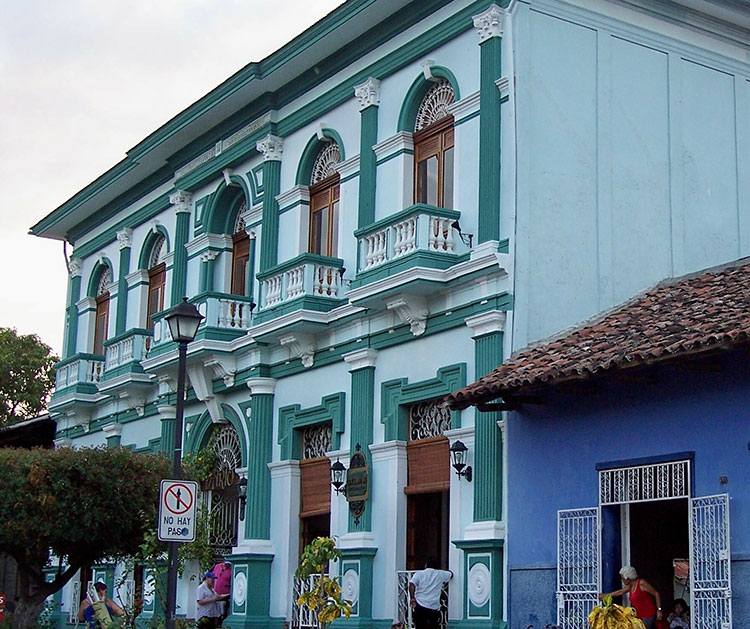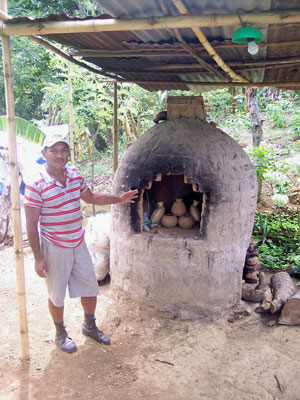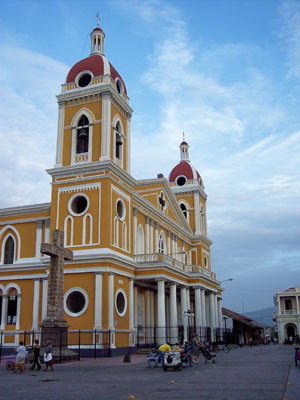Nicaragua: Central American adventure
This item appears on page 63 of the August 2014 issue.
(Part 1 of 3)
In early June 2014 I had the opportunity to explore four of the five countries visited on the 14-day “Discover Central America” tour offered by longtime ITN advertiser SITA World Tours (Encino, CA; 800/421-5643).
My partially hosted journey included Nicaragua, El Salvador, Honduras and Guatemala. Time did not allow me to include Costa Rica, which I have visited previously and which normally is part of a 5-nation itinerary.
Nicaragua
The first four days of my adventure were in Nicaragua, where my guide, Roberto Darce Sequeira, constantly brought the nation’s checkered history to life.
The founding president of the Nicaragua Guides Association, Roberto is an engineer by profession as well as a student of Nicaraguan history, and he has seen it all, including forced service as an 18-year-old Sandinista conscript more than 20 years ago during the nation’s bloody civil war.
Upon my morning arrival in Managua, the country’s capital (pop. 1.4 million), Roberto and I undertook a brief tour on which I learned that the lakefront city has twice been devastated by powerful earthquakes, first in 1931 and again in 1972.
Truthfully, rather than being a tourism destination, Managua today is more of a business and political center and a staging point for day excursions.
After a brief visit to the main square and a popular park on the shores of 35-mile-long, 15-mile-wide Lake Managua, we were on the road to the popular city of Granada (pop. 120,000), only 29 miles to the southeast.
Colonial Granada
Colonial Granada’s origins date to 1524, when it was founded by Spanish conquistador Hernández de Córdoba. One of the oldest cities in the Western Hemisphere, it is known for its well-preserved historic architecture.
A lakefront city like Managua, Granada is situated on gigantic Lake Nicaragua, 99 miles long and 47 miles wide, a body of water that looks much like an inland sea. Also like Managua, Granada is located in the Pacific lowlands, a rather flat region except for a line of young volcanoes, a few of which are still active.
On arrival in the city, I checked in to the early-19th-century neoclassic-style Hotel Dario, ideally situated only 100 meters from Parque Central and a few minutes’ walk from the lakeshore. With an intimate colonial atmosphere, the property has appealing gardens and spacious, well-appointed rooms featuring high ceilings.
My first morning in Granada, Roberto took me to visit the Granada Islets, a unique series of small islands bunched together in a corner of Lake Nicaragua. Our one-hour cruise weaved among the tiny islands, providing glimpses into the lakefront lifestyle of the locals and of the many alluring private vacation villas, some of which are the sole residences on their islets.
Later, Roberto led me on an informative walking tour of Granada, showing me the main square and many historic sites, including the museum at the San Francisco Convent, with a display of pre-Columbian statues and pottery, and La Merced Church. From the bell tower of the church, we had a panoramic view of the city.
During the walking tour in the afternoon heat, I also discovered that Granada is a city of ice-cold tropical fruit smoothies, a treat that was destined to become a staple on my journey through Central America.
That night, Roberto and I ventured to the Granada baseball stadium to see the local professional team in action. Our “best seat in the house” tickets cost $2 each, and we two former ball players thoroughly enjoyed the relaxed tropical evening.
Volcanoes, villages and pottery
The following morning we headed for the mountains and Mombacho Volcano, where we boarded a large, 4-wheel-drive vehicle, shared with several other travelers, for an excursion upward into the cloud forest.
On arrival, our 2-kilometer hike through the forest revealed a rich ecosystem. We viewed two types of orchids and impressive arrays of ferns, butterflies and bird species, including hummingbirds. Periodically, the clouds would part, unveiling views stretching to the lowlands far below.
After a return ride down the mountain, we next visited the pottery village San Juan de Oriente, which is rightfully famous for its quality pottery products. I enjoyed a fascinating demonstration of the 16-step, 15-day process of pottery making, which utilizes all natural materials in deriving the colors. The final polishing revealed the most colorful, quality pottery I have encountered in my travels.
We continued to beautiful Catarina, a small town at 2,300 feet in elevation that is known for its colorful flower nurseries and a lookout offering inspiring views over a crater lake far below.
It was Saturday, and throngs of locals were enjoying the scenic vistas, music and numerous restaurants. I would have happily remained for hours, but we needed to continue to the handicraft market at Masaya and Masaya Volcano National Park, the country’s first national park.
After a quick jaunt through the market, and refreshed by another round of wonderful tropical fruit smoothies, we climbed upward to the rim of Masaya Volcano. Peering over the rim, I could feel the life energy of the steaming, simmering molten mass below.
Twelve miles of scenic roads and trails wind around the two volcanoes and five craters within the park. The visitors’ center museum is very informative and is definitely recommended.
On to Managua
Dusk was finally upon us, time to wind back down into the lowlands to Managua and the statuesque Crowne Plaza Hotel, my home for the next two nights. Featuring a unique architectural style reminiscent of ancient Mayan pyramids, the Crowne Plaza is centrally located and user-friendly in all regards.
After settling in, I ventured across the street to a mall to explore the food court offerings, only to discover food court karaoke, Nicaragua style. The place was packed and the noise was deafening, so, seeking calm respite after a long day of touring, I retreated to the calm confines of a Chinese restaurant adjoining my hotel.
León beckons
The following morning, Roberto drove me northwest about 60 miles through the lowland countryside to visit the colonial city of León, a UNESCO World Heritage Site. En route, we visited the ruins of the original city, founded in 1524 but abandoned in 1610 due to earthquakes and the constant threat of devastation by Momotombo Volcano.
León (pop. 195,000), the nation’s second-largest city, functioned as the Nicaraguan capital multiple times after declaring independence in 1821 and is considered the intellectual and political center of the country. A bustling university city, it is home to the second-oldest university in Central America, dating to 1813.
Roberto and I toured part of the Old City by auto, then went on foot to the largest cathedral in Central America, the dramatic, historic Cathedral of León, during Sunday Mass.
From there, we made our way to the Art Center of the Ortiz-Gurdián Foundation, comprising old and refurbished colonial-style buildings. One of the buildings was the former home of famed Nicaraguan poet Rubén Dario.
By the seaside
By this time, I had become desperate for the sea, so Roberto happily pointed our van toward the Pacific beaches of Las Penitas, a quiet fishing village some 20 miles to the west.
On our arrival at the beach, a rather low-key thatched bar — right on the sand — seemed to be waiting for me like a long-lost friend, serving ice-cold cerveza and mounds of fresh seafood. It was perfection, like going back in time to my old Baja stomping grounds but with a Nicaraguan flag behind the bar.
Continuing this description of my Central American adventure, next month I’ll take you north to El Salvador and Honduras.
Beyond the Garden Wall
❝ Nicaragua, in simple tourism terms,
is a place where a new day has dawned,
where one can truly discover and be amazed
far from the madding throngs ❞
— Randy on Nicaragua’s increasing visitor appeal




